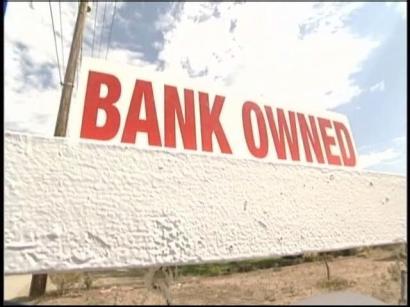 So many Americans have been jobless for so long that the government is changing how it records long-term unemployment. Citing what it calls "an unprecedented rise" in long-term unemployment, the federal Bureau of Labor Statistics (BLS), beginning Saturday, will raise from two years to five years the upper limit on how long someone can be listed as having been jobless.
So many Americans have been jobless for so long that the government is changing how it records long-term unemployment. Citing what it calls "an unprecedented rise" in long-term unemployment, the federal Bureau of Labor Statistics (BLS), beginning Saturday, will raise from two years to five years the upper limit on how long someone can be listed as having been jobless.
The move could help economists better measure the severity of the nation's prolonged economic downturn.

 Economic Glance
Economic Glance American International Group Inc., the insurer bailed out by the U.S., garnered $4.3 billion in bank credit lines in another step toward repaying taxpayers and gaining independence. The credit, provided by more than 30 banks and administered by JPMorgan Chase & Co., includes two $1.5 billion facilities, one for three years and the other for 364 days, AIG said today in a regulatory filing.
American International Group Inc., the insurer bailed out by the U.S., garnered $4.3 billion in bank credit lines in another step toward repaying taxpayers and gaining independence. The credit, provided by more than 30 banks and administered by JPMorgan Chase & Co., includes two $1.5 billion facilities, one for three years and the other for 364 days, AIG said today in a regulatory filing. Billions of dollars in top-rated bonds backed by community banks have gone bust, debunking the defense offered by credit-rating agencies that wildly inaccurate ratings were limited to risky mortgage bonds that imploded and then triggered the U.S. financial crisis.
Billions of dollars in top-rated bonds backed by community banks have gone bust, debunking the defense offered by credit-rating agencies that wildly inaccurate ratings were limited to risky mortgage bonds that imploded and then triggered the U.S. financial crisis. The Federal Reserve Board, chastised for regulatory inaction that contributed to the subprime mortgage meltdown, also missed a chance to prevent much of the financial chaos ravaging hundreds of small- and mid-sized banks.
The Federal Reserve Board, chastised for regulatory inaction that contributed to the subprime mortgage meltdown, also missed a chance to prevent much of the financial chaos ravaging hundreds of small- and mid-sized banks. The banks involved include Bank of America, Ally (formerly GMAC), JP Morgan Chase, One WestBank (formerly Indybank), Citibank, and Wells Fargo.
The banks involved include Bank of America, Ally (formerly GMAC), JP Morgan Chase, One WestBank (formerly Indybank), Citibank, and Wells Fargo. When Hal Scott testified on financial reform before the Senate last February, he identified himself simply as a Harvard Law School professor and director of an independent research group.
When Hal Scott testified on financial reform before the Senate last February, he identified himself simply as a Harvard Law School professor and director of an independent research group. The problem is that the broad decline of the manufacturing sector that has been underway in this country for decades now may threaten not just the long-term health of the economy but also the living standards of all but the wealthiest Americans.
The problem is that the broad decline of the manufacturing sector that has been underway in this country for decades now may threaten not just the long-term health of the economy but also the living standards of all but the wealthiest Americans.






























